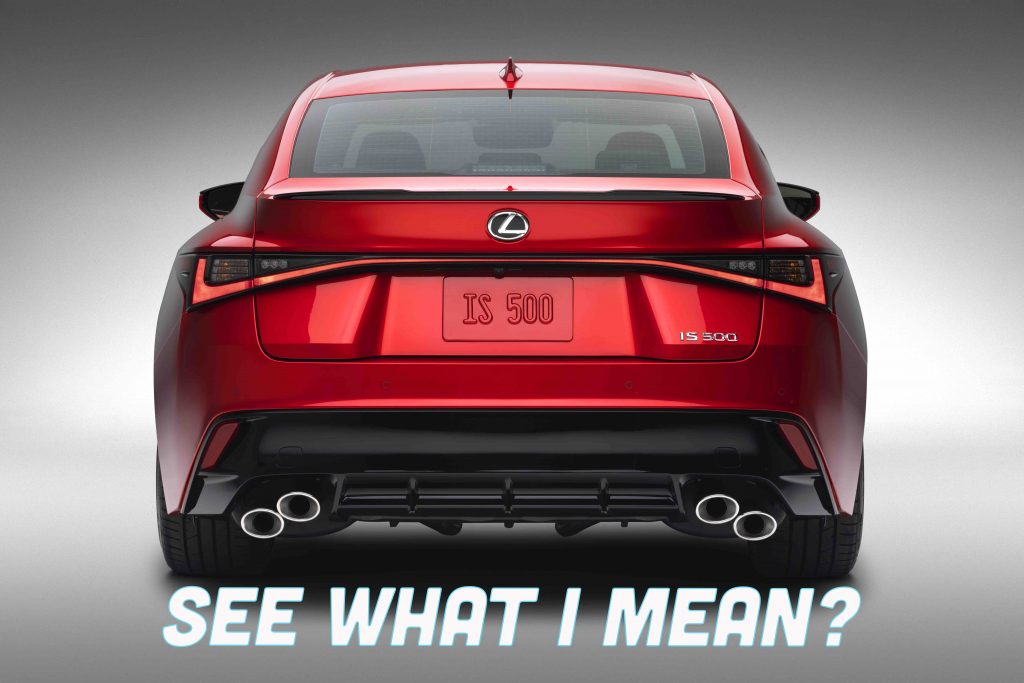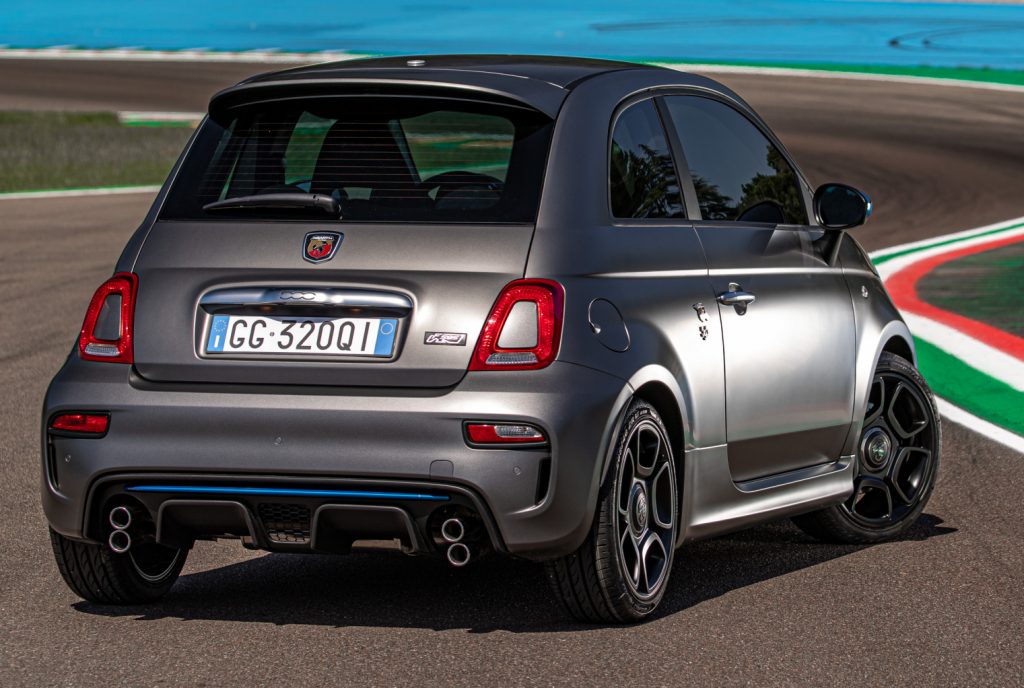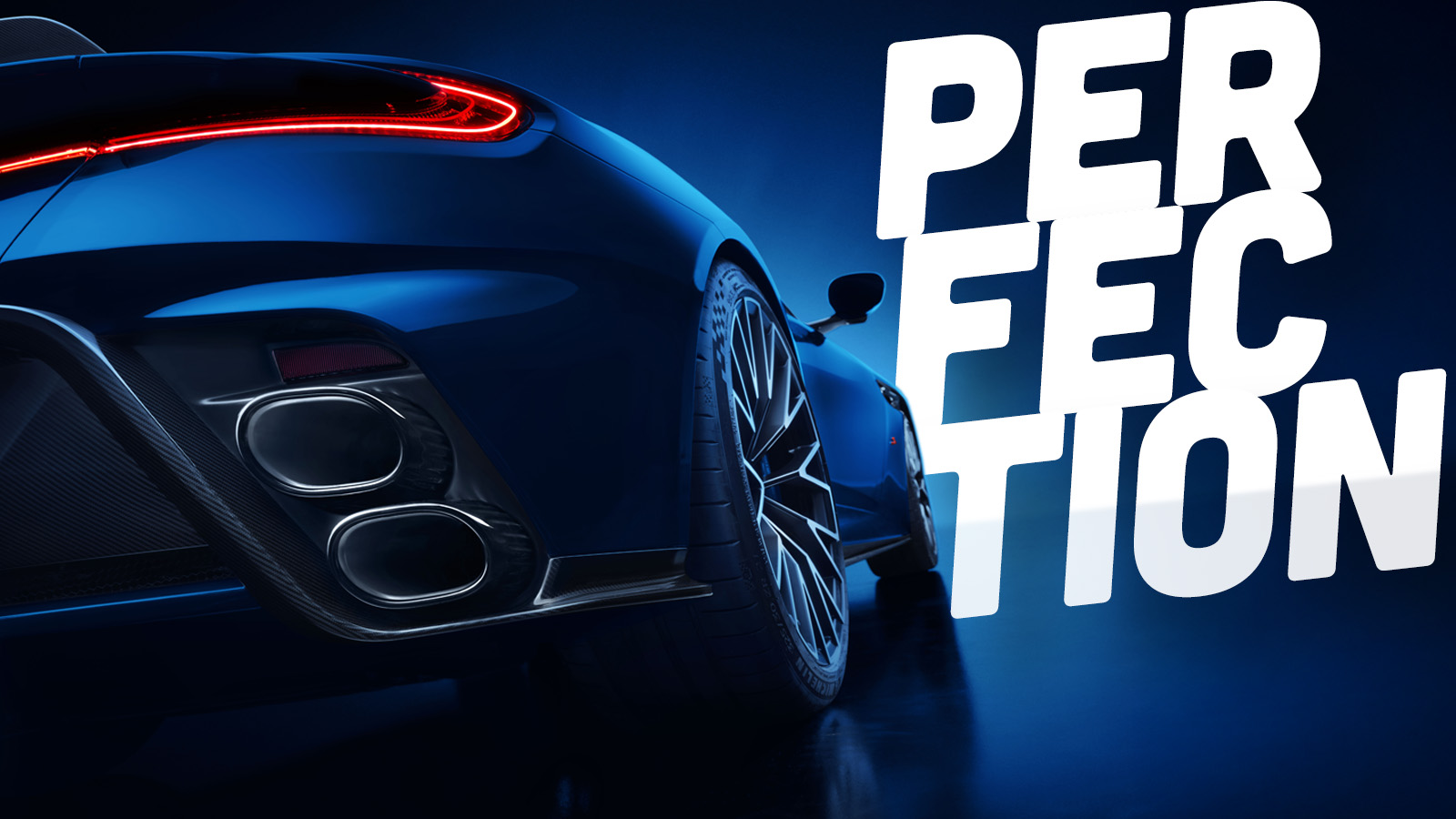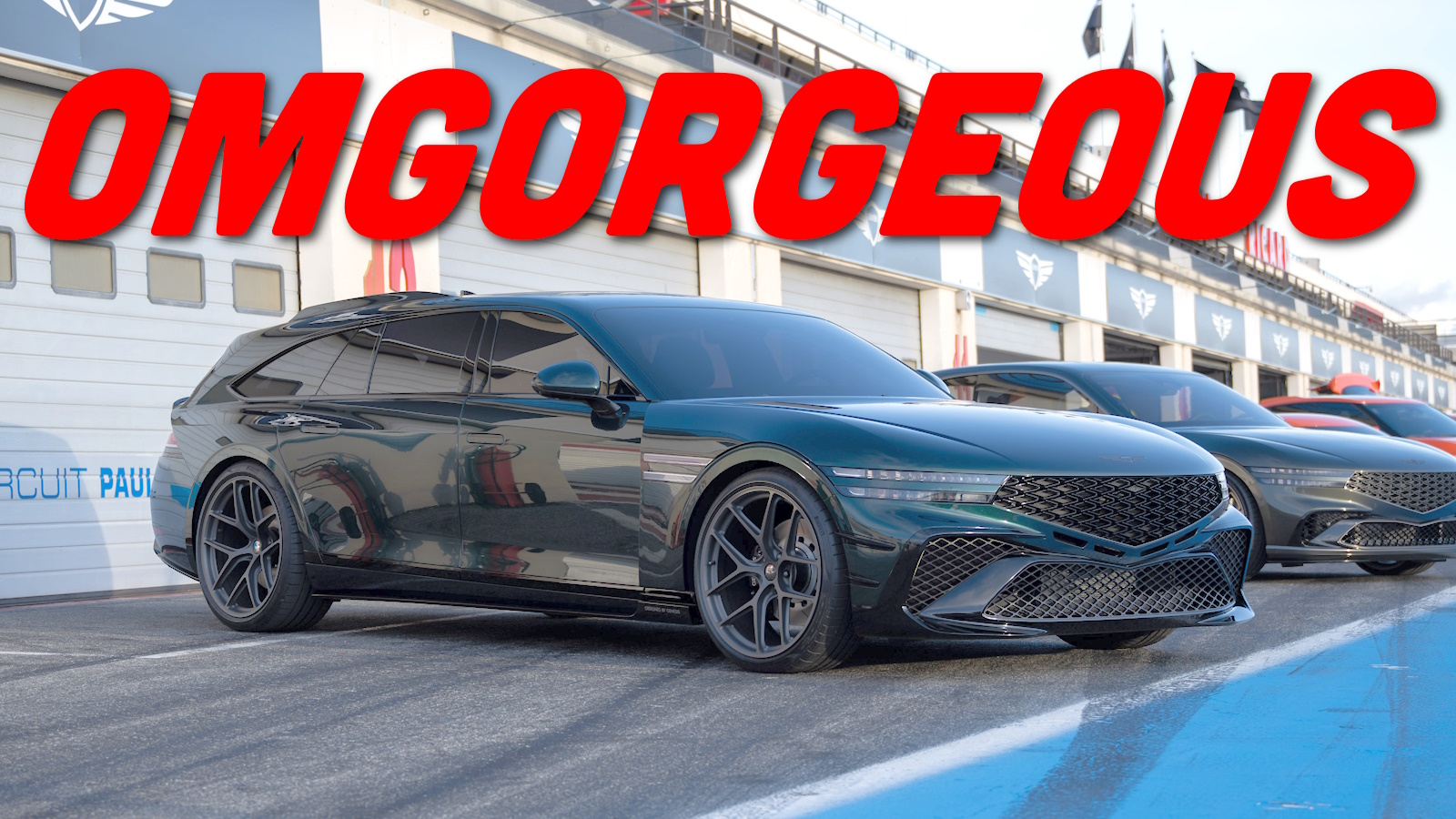I love a fun exhaust tip design. Every gas-powered car needs at least one, so it warms my heart when automakers get cheeky with stuff like shape, placement, and tip count. One of my favorite exhaust tip arrangements has to be when tips are stacked vertically, rather than horizontally. In a world where virtually every car’s exhaust tips are arranged horizontally, vertically mounted tips are weird and interesting. And seeing them on a production car makes me happy.
Lexus made this arrangement popular back in 2007 with the introduction of the IS F sedan, a V8-powered bruiser designed to compete against icons like the Mercedes-Benz C63 AMG and the BMW M3, both of which also had V8s at the time. Hilariously, the tips weren’t actually connected to the exhaust pipe; they were beauty covers that shrouded more conventional pipes.
Still, they proved popular enough to be revived for cars like the RC F, the GS F, and the IS500, this time as real exhaust exits—though you could argue those pipes are more diagonally stacked than vertically arranged, like they were on the IS F. Here’s how the two look back to back:


Either way, I applaud Lexus for these funky exhaust setups. This is the type of stuff you’d normally need to go to a tuner meet to see, but it’s here, on a luxury sedan you can buy right from the showroom floor. Excellent.
Of course, Lexus isn’t the only brand to adopt the vertically stacked exhaust arrangement. A later version of the last-generation Fiat 500 Abarth called the F595 released in 2021 has vertically stacked quad tips, and they’re as adorable as you’d think:

There are other, more modern interpretations of the vertically stacked quad tip, like the BMW XM, with its polygonal tips, and the Bugatti Chiron Super Sport 300+, which integrates its vertically stacked tips into the diffuser. And now, there’s another. Following the launch of the DBX S, which got a sweet pair of vertically stacked pipes, Aston Martin has given the same treatment to the newest edition of its lineup, the DB12 S.
The DB12 S, like the DBX S and the Vantage S before it, represents an incremental improvement for Aston’s mid-level grand tourer. In addition to the new pipes (there were just two before; now there are four total), there’s also a new splitter, new side sills, a new diffuser, a new fixed spoiler, and a smattering of “S” badges throughout.

The Mercedes-AMG-sourced 4.0-liter twin-turbo V8 under that long hood now makes 690 horsepower, an increase of 19 hp over the standard model. Torque comes in at 590 pound-feet, unchanged over the lesser trims. The exhaust it’s connected to is more than just a design statement; there are some real improvements to performance here if you choose the optional titanium version:
In keeping with this intensified spirit, DB12 S features a distinctive new exhaust sound character. The new quad tailpipe stainless steel sports exhaust system has been tuned to accentuate the engine frequencies throughout the rev range for added depth and potency. An optional titanium exhaust system amplifies that soundtrack, further boosting the bass, mid and treble frequencies uplifting the sound level by 1.5dB. while also reducing weight by 11.7kg [25.7 pounds] compared to the stainless steel system.
There are a bunch of other upgrades underneath the skin, too. The fancy Bilstein BTX dampers have been retuned to work with a stiffer rear sway bar and new suspension geometry settings. The electric differential has also been retuned, as has Aston’s launch control system and its “corner braking control” system, which, according to the company, helps the car to stay stable during threshold trailbraking into a corner.

The DB12 S gets carbon-ceramic brakes as standard, meaning better performance from the left pedal after repeated stops. It also means 59.5 pounds of unsprung weight saved, which means even better handling. All of the changes, Aston says, result in a 0-60 time of 3.4 seconds, 0.1 seconds better than before (I’m not sure this number means anything to anyone anymore; I’m just sharing it to show the absurdity of how much work has to go in for such a minuscule improvement that I’m sure no DB12 buyer will notice).
I, for one, hope that Aston brings vertically stacked exhaust tips to its entire lineup. If the company releases a Vanquish S, I’m sure the setup will appear on that car. Sadly, it doesn’t look like the Valhalla will be getting vertical tips, as the final design has horizontally arranged top-mounted exhausts. The entry-level Vantage is a bit of a question mark. The company unveiled an S model earlier this year, but it had the same horizontally mounted pipes as the normal car. Hey, there’s always a mid-cycle refresh to look forward to.









Lexus did it better. But I wonder whether, like the V6 Camrys, only two pipes actually handled exhaust gasses.
I like to think that if I had Porsche money I would buy an Aston Martin,sadly we will never know.
Just no.
Because that massive black chunk of whatever in between looks like a dumb afterthought.
Call me when the pollution emitting devices are completely gone.
I’m digging the Aston “stack” I’m still conflicted on the BMW M3/M4 factory performance exhaust option, though
That exhaust looks cheesy, but not as bad as that terribly fake “diffuser”.
Clicked on story about “vertical exhaust tips” and left disappointed because this is what I was expecting.
https://stories.hemmings.com/wp-content/uploads/2014/11/origin-142.jpg
Darn, I just went thru their configurator to find out how much they are charging for the titanium exhaust, but it ends in ‘send to your dealer’ rather than a priced tally sheet.
Ferrari California MK1 has entered the chat.
Screw exhaust tips, I want to see stacked headlights return!
Aren’t they more popular than ever? It seems all new crossovers have the thin head lights, or light bar, at the top, then the actual head lights lower on the fascia.
True, but I want ’em Ford Galaxie style, right on top of each other, rather than the disconnected vertical ’79 Firebird style most have.
The rear view of that thing is not attractive at all.
I prefer the “tail gunner” center exhaust as found on early 5-series BMWs. And Boxster/Caymans.
Best exhausts:
Pagani’s Zonda
Ducati’s MH900e
And almost anything from MVAgusta.
It makes the Vmax muffler come to mind.
On the subject of exhaust and exhaust tips, we need an article of cars with side exhausts. Those stacked A-M tips look cool, but nothing is quite as cool as a C2 or C3 Corvette or Viper side exhaust.
Impractical as all hell, but totally bitchin’.
On the GM half tones the rear exit int he bumper looks a lot like and HDMI cable plug. I kind of like that.
I’m going to have to disagree, I actually don’t think any of those look better than side-by-side. Maybe the Aston just because there isn’t room, but the Lexi definitely, and the Fiat just looks silly, but that might be because I just don’t care for the 500 all that much.
I agree that it looks silly on the 500, it would look so much better with just 1 larger tip on each side. That is typically how I feel on most exhaust setups with more than 2 tips. The ISF ones looked cheesy, especially since they were just part of the bumper and you could see the actual (and much smaller) tips through the opening. The Aston design is OK, but from that rear view, but would look better if they weren’t directly behind the rear wheels.
When you said “vertical exhaust tips” I was hoping for:
THIS
While I generally agree that vertical looks good, especially on the ISF and 70s Trans Am, it looks silly on pickup trucks. I’m not sure who made it, but my local Ford dealer had one of those custom-but-sold-through-dealers-for-idiotic-prices F150s that had the dual exhaust out the back bumper, but each side had a vertically stacked exhaust tip and it looked awful.